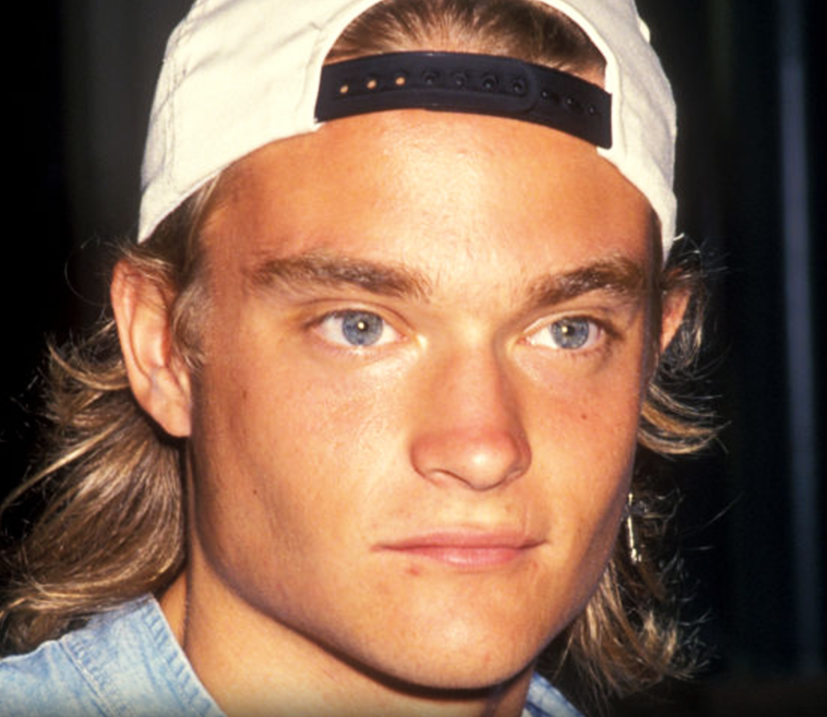He was once the boy every magazine wanted on its cover — a smiling face that graced American living rooms throughout the 1980s. But behind the fame and perfect image was a young actor quietly struggling with identity, pressure, and purpose.
A childhood on set
Born in 1974, this former adorable child actor landed his first role at just eight years old, portraying an autistic boy in St. Elsewhere. To help him prepare, his mother explained that children with autism often live in worlds of their own.
“And I understood that. I would sit there and have this whole world going on in my head. I’d be following the patterns on the wall, and in my head there was an imaginary war going on between the shapes,” he later reflected.
He also made a guest appearance in an early episode of Airwolf, earning a nomination for “Best Young Actor: Guest in a Series.” Soon, he was everywhere, starring in family dramas like Our House and My Two Dads, learning lines instead of doing math homework, and growing up under the lights.
“I played pretend, and I was good at playing pretend… and all of a sudden people were making a lot of money, and I didn’t want to do it anymore,” he recalled years later.
The teenage heartthrob loved acting but felt trapped by the world it created. Normal childhood moments — playgrounds, friends, school dances — were replaced with studios, scripts, and interviews.
Breaking the mold
By his mid-teens, fame shaped every part of his identity. Publicists curated his image, and photo shoots polished it further. The boy America adored became a brand, and he began to wonder who he really was behind the glossy covers.
At 16, he made a bold choice: he walked away from Hollywood to live a normal teenage life. He enrolled in high school and joined the drama club, “mostly because it was for the rejects, the gay kids, very uncool.”
“I discovered that I liked the world of the theater, which was so different from the world of the teen star.”
Addiction took over
Raised in a devout Catholic home, he grew up with discipline and devotion. But as fame and adulthood collided, addiction soon took hold.
“At the end of the day, I was alone, and I couldn’t stop drinking…”
Eventually, things spiraled so far out of control that he found himself isolated in his Malibu condo, teetering on the edge of death. A close friend, actress Heather Tom, finally walked away — a painful wake-up call that forced him to choose between destruction and redemption. He entered recovery and discovered that helping others was not just healing but transformative.
Outed, exposed, and reborn
At 21, while starring in Dr. Quinn, Medicine Woman, his world came crashing down. In 1996, a U.S. tabloid published photos of him kissing another man in a hot tub at a party. The images, sold by someone claiming to be a friend, were paired with fabricated rumors.
“So I was scared. Just scared,” he said. He didn’t want to lie, nor did he want to become anyone’s headline.
“There were certainly plenty of people in my life who didn’t know I was gay, because they never cared to ask or weren’t close enough to me, but there were plenty of people who already knew,” he said.
Lawyers, managers, and executives debated how to “handle” him. But he refused to play along. The cast of Dr. Quinn was supportive, and he stayed on the show, but once the series ended, “it was tough.”
“My dad couldn’t look me in the eye. And that hurt. Because a boy always wants his dad’s acceptance. And I knew I’d been lying to them,” he shared. His mother, unsure how to react, began to cry and said she had always assumed he was too cute not to have a girlfriend.
The fallout was painful, but something unexpected happened. Letters started pouring in from young gay men across the country, thanking him for being visible. For the first time, he wrote back by hand.
“It helped me, actually, all this pressure I was getting to identify myself. It just meant so much to know I wasn’t going through it alone either. After all, what is [loving men]? There’s so much attached to it, but at the end of the day, it’s love. I’ll take it. Whatever it looks like,” he explained.
Unfortunately, the revelation had harsh consequences for his career. “I couldn’t get an audition for a pilot after that,” he shared in 2008.
From actor to psychologist
After decades of fame, addiction, and personal battles, he stepped away from Hollywood in 2015 — not in defeat, but in transformation. He went back to school, earned a Doctorate in Clinical Psychology, and opened his own private practice.
Today, he helps others navigate trauma, identity, and healing — the very struggles he once faced himself. He named his practice Confluence Psychotherapy, a symbol, he says, of two rivers meeting to form something stronger.
“My greatest hope is that when we die, we get to experience God and let go of all judgments and preconceived notions… Anything that comes with fear or judgment, it can’t be of God.”
Now, his days are spent counseling patients, walking his dog, and exploring nature — far from the noise of red carpets and cameras. He has also become an advocate for the LGBT community and expressed gratitude to Gavin Newsom for his efforts to legalize same-sex marriage in San Francisco.
The boy who once appeared on every magazine cover grew into a man who chose meaning over fame, truth over image, and healing over applause.
His name? Chad Allen — former teen idol, now a doctor helping others find peace.
Best wishes and best of luck always, Chad! You are a true class act, and while your presence on screen is missed, we are grateful you’ve found a calling that helps others.
